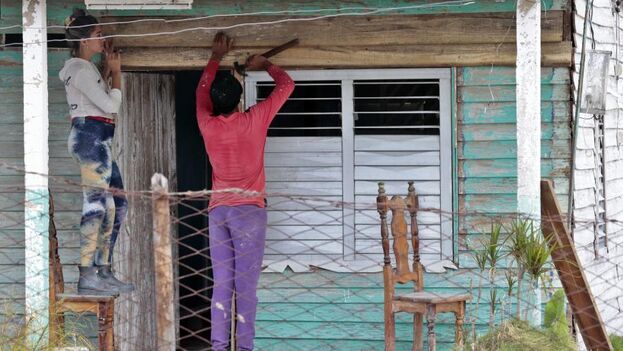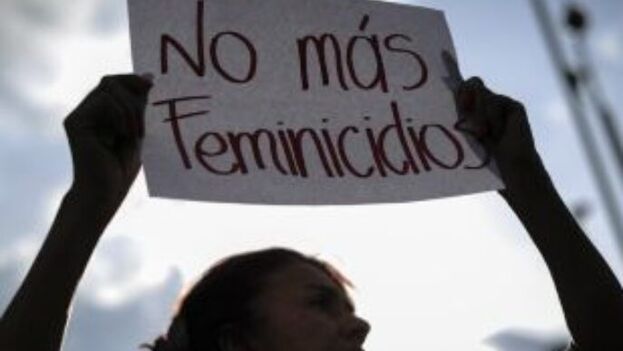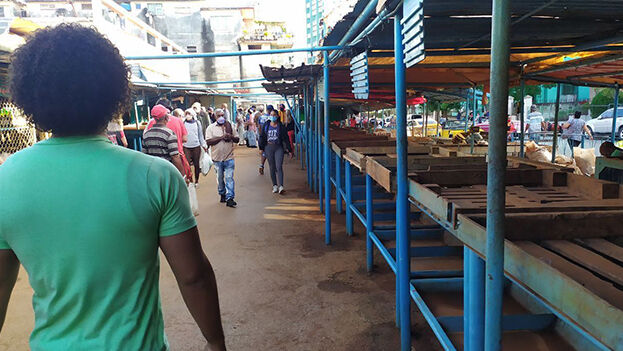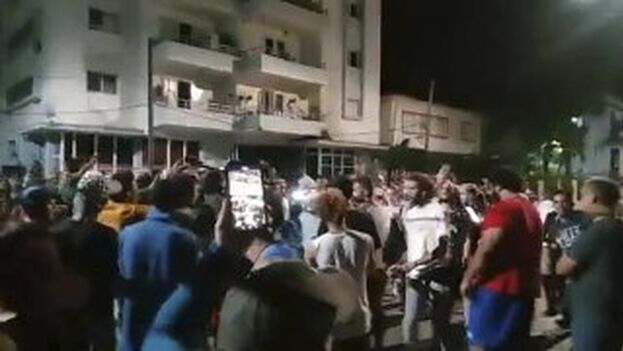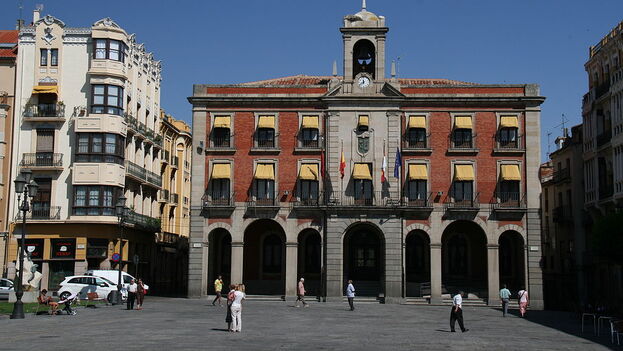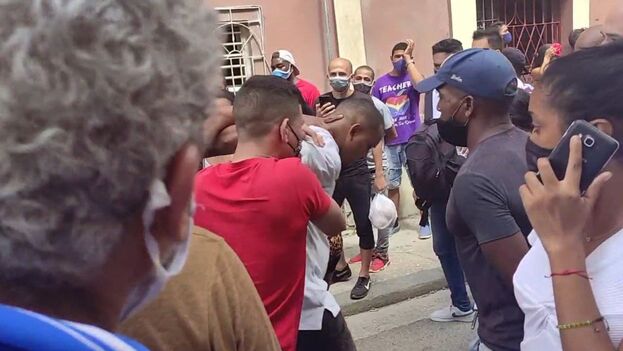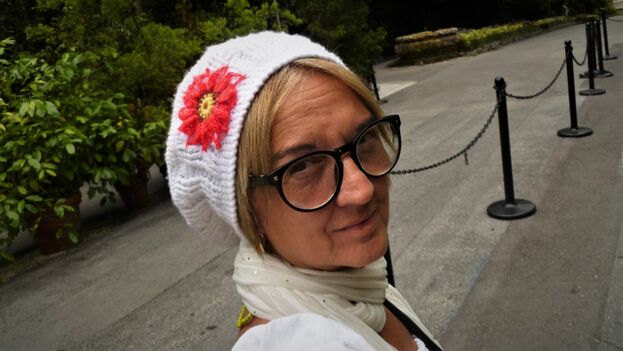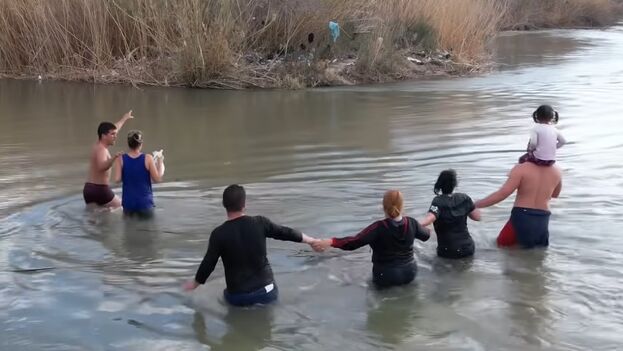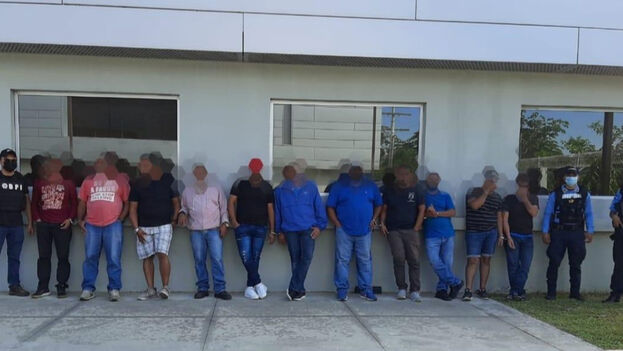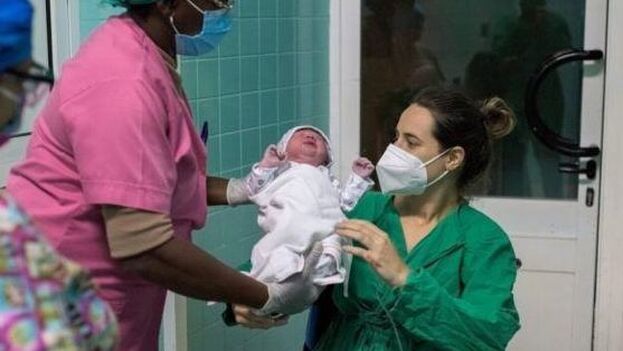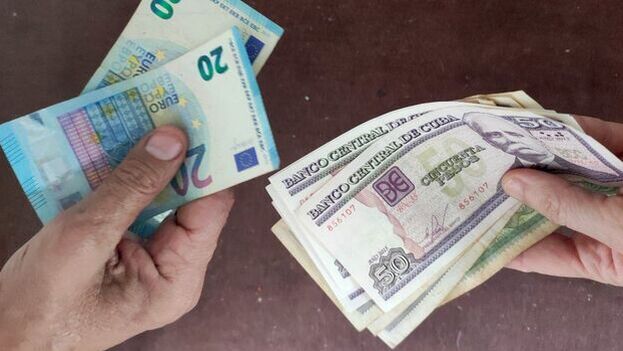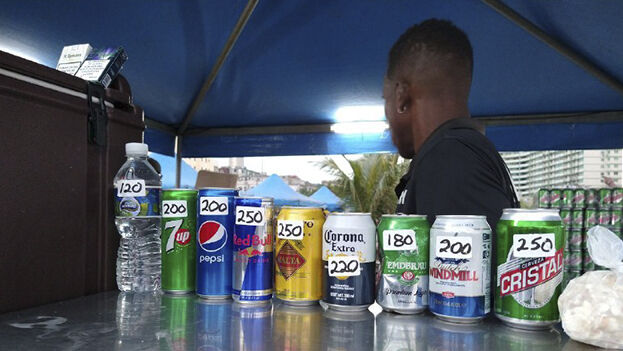Marrero is the Cuban regime’s prime minister and, as such, carries a certain level of responsibility in a country where rice production has declined continually in the last years, to such an extreme as to depend on donations from Vietnam to meet the basic needs; he is giving lessons to the world on how to produce hybrid rice. To cite a few data points from the annual reports of the National Statistics and Information Office (ONEI), in 2014 Cuba produced 584,800 tons of rice, production in 2021 (the last data point) was 225,786 tons — a spectacular decline of 61% in a product that is staple of daily food consumption among Cubans. And Marrero is giving lessons to the world on hybrid rice. I insist, no one understands anything.
The Cuban communists lack stage fright due to their total lack of responsibility. Since they do not respond to an electorate in periodic and pluralistic elections, they do not understand about being held accountable for their management. Marrero spoke in front of the world of food sovereignty, no less, saying that for Cuban communists it consists of “reducing dependence on imports, strengthening productive capacity, use of science, technology and innovation, and developing efficient and sustainable food systems at the local level.” At no point did he attribute food sovereignty to eating food in sufficient quantities every day. That does not matter.
As of now, the regime’s position is brilliant on paper and the political discourse, but impractical under the economic model in place in Cuba. This national plan for food sovereignty and improved nutrition education will result in nothing. Just as, with the same ration card and the eternally long lines at the bodegas. continue reading
Marrero’s discourse has been an exercise in irresponsibility no matter how we look at it. It began, why not, blaming the United States embargo/’blockade’ for the difficulties in meeting the goals of food sovereignty in Cuba. In his presentation he denounced that the embargo/’blockade’ has as its goal to “provoke hunger and desperation among our people,” and that it not only “violates our right to development, but also our right to life.” The same old story. Perhaps he should have referred to that internal embargo/’blockade’, which is what truly impedes — for the barriers, obstacles, and prohibitions of the marxist economic model — development and prosperity for Cubans. But, none of that.
In reality, food for Cubans has been an instrument of power and control for the communist regime since it launched the ration card. At that time, when stores in Cuba were well stocked, the reasons given were the same ones offered for why the basic food basket is now regulated: to prevent consumers’ freedom of choice, freedom to buy and sell, the function of a free market of supply and demand.
Communists replaced that structure with a centrally planned economy, an idea that came from a few bureaucrats which are allowed to prevail over the rest of the citizenry and are assumed to know better, can plan the daily needs for fats, calories and protein of each citizen, and cap prices at their whim. And here is where the origin of the disaster lies. Because none of what is planned can turn out well and, systematically, the system enters into crisis and emerges from the shortages, the queues, the misery and the desperation. It has been known for a long time that communism is incapable of providing these kinds of solutions.
And clearly, before having to respond and not knowing how to do so, Marrero did what the communists always do, throw balls out of bounds and waste time. As, for example, when he stated “enough food is produced globally to feed everyone, but it is wasted, unsustainably, and its distribution is inequitable.” Perhaps, he should understand why this phenomenon occurs, behind this, there are grants and subsidies provided by many governments to agricultural producers, which end up producing inefficient results.
That is, inappropriate public policies of states to maintain the agriculture and livestock sectors end up creating these excesses, which in the long term, are nothing more than a waste of public funds. The problem is that, in Cuba, the agricultural sector does not function, not even with that waste. Here, the issue lies in property rights, which prevent producers from keeping the income generated by their exploitation of the land.
Not wanting to look bad in his presentation, and not knowing the mechanisms of agricultural over supply, Marrero stepped in it once again and bemoaned that “efforts to end hunger, food insecurity and malnutrition in all its forms, and to achievement of the Sustainable Development Goal of zero hunger by 2030 are backsliding.” But, what does Marrero know of those efforts? Is it that he has some data on emigrants who year after year request to move to the communist paradise he leads?
It is all well and good on paper and speeches, but what is Marrero doing to end hunger in Cuba, which is ever worsening? It is no longer only a matter of shortages, but prices. The inflation rate of food prices reached almost 60% in September, 20 points higher than the median. Not only do Cubans not find the food they want to consume in the stores, but for the little they do find must pay excessive prices. Marrero should respond to this. It is his responsibility.
Then the time came for the acknowledgments, basically referring to China. The same as always: “donations of machinery and materials for agricultural production to improve the productive system as well as the academic exchange in areas such as farming hybrid rice in saline soil, especially relevant when facing the adverse effects of climate change.” And we all know how this all ends.
And, why not, he dedicated part of his speech to exalt “China’s positive contributions of food security materials at a global scale, considering that with only 9% of the planet’s arable land, it feeds close to 20% of the world population, and its successes in the fight to eradicate extreme poverty.” He should copy the Chinese recipe and let go of the less practical reflections. The Chinese gave land rights to agricultural producers and, thanks to that, decades ago left behind the scenario of hunger like the one in Cuba.
It is all the same. Now it is time to praise the new associate, as soon as Russia remained on the sidelines due to the war in Ukraine. Marrero turned it into Chinese public relations before a Latin American audience, launching all types of praise on the China-Latin America Center for Innovation in Sustainable Agriculture, an organization dedicated to providing Chinese funding to industry, universities and research institutions as part of the Chinese strategy to penetrate the continent. Beware.
Finally, Marrero took the opportunity to lecture on things of which he knows nothing, such as, for example, overcoming the painful human drama that is hunger which, according to him requires “transforming, urgently, radically and sustainably capitalism’s irrational and unsustainable patterns of production and consumption so humanity may save itself.”
It is a joke in poor taste for someone who has demonstrated his absolute inability to solve the hunger problem in his own country with a communist model to target capitalism and blame it for doing the same. Marrero should know that the Cuban mules that supply merchandise from Haiti to well stocked stores are surprised when they confirm how in that country there is relative abundance of food, and what’s more: at low prices, even for Cubans.
Years ago, FAO erred in allowing people like Marrero to talk before the world and to say such nonsense about food sovereignty such as what he presented in his speech. Taking responsibility, not at all. Stubbornly holding onto the same, useless, communist ideas, absolutely. And yes, incapable of seeing the plank in their own eye.
Editor’s note: This article was originally published on the Cubaeconomia blog and we have reproduced it with permission from the author.
Translated by: Silvia Suárez
____________
COLLABORATE WITH OUR WORK: The 14ymedio team is committed to practicing serious journalism that reflects Cuba’s reality in all its depth. Thank you for joining us on this long journey. We invite you to continue supporting us by becoming a member of 14ymedio now. Together we can continue transforming journalism in Cuba.

![]() 14ymedio, Havana, 15 November 2022 — Mexico is again an escape platform for Cuban athletes, in this case the taekwondo martial artist Yamitsi Carbonell, the rower Boris Luis Guerra and the baseball player Miguel Flores. As usual, the official press called them “traitors” to their team and “their country.”
14ymedio, Havana, 15 November 2022 — Mexico is again an escape platform for Cuban athletes, in this case the taekwondo martial artist Yamitsi Carbonell, the rower Boris Luis Guerra and the baseball player Miguel Flores. As usual, the official press called them “traitors” to their team and “their country.”
